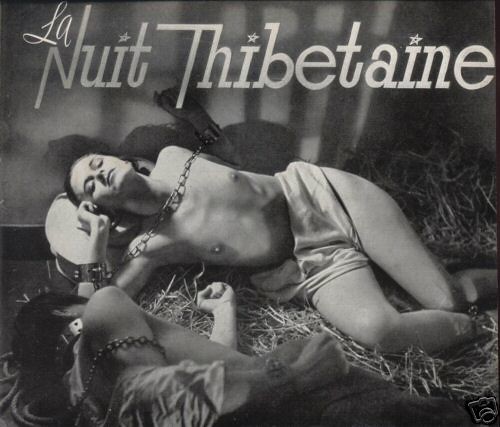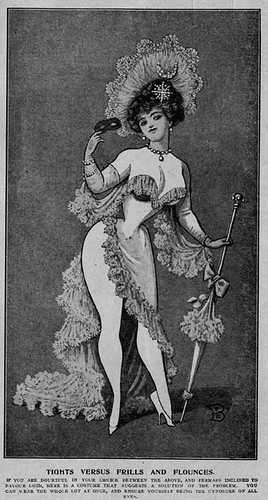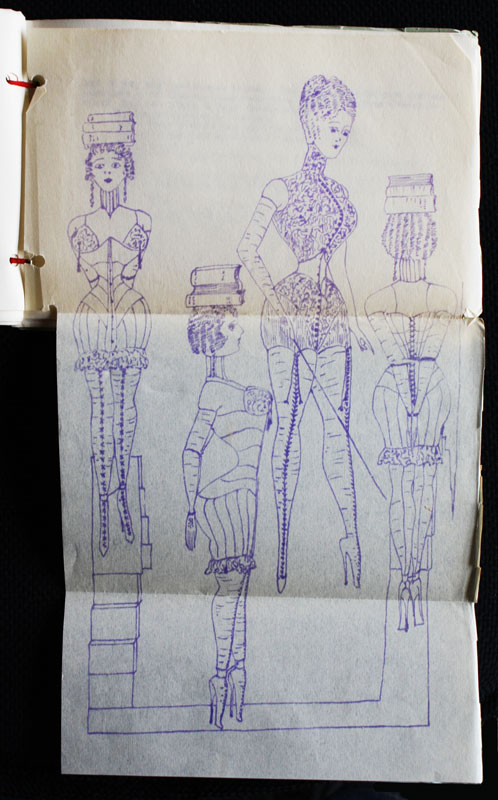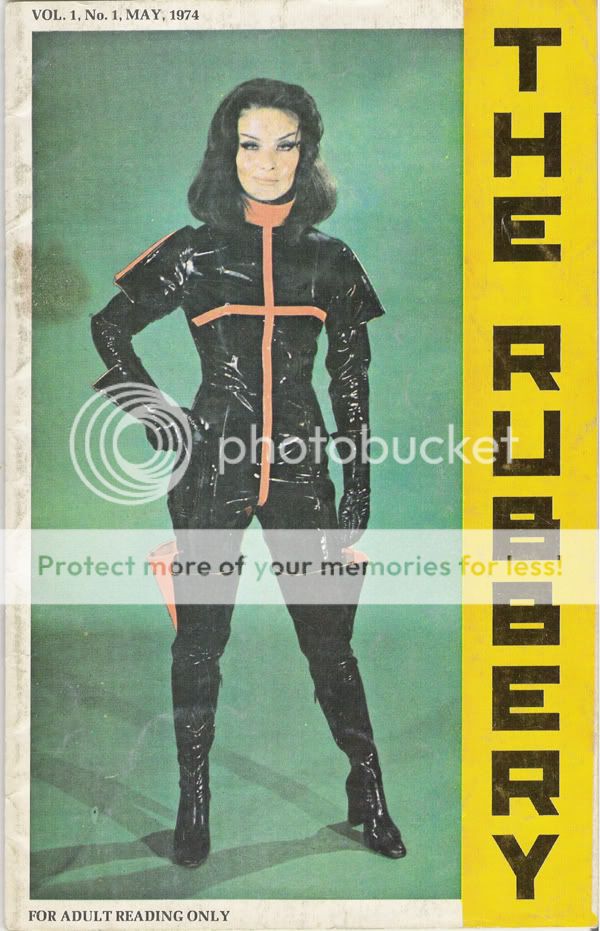Thanks to eBay, I now own two copies of London Life magazine.
London Life was what succeeded The Englishwoman’s Domestic Monthly and The Family Doctor in sustaining England fetishist population. It was a popular magazine: maillot-clad bathing beauties (the bikini hadn’t been invented yet), Hollywood gossip, short fiction, etc.
It doesn’t get really interesting until you get to the letter sections. Then you’re hanging out with:
BROKEN SPIRIT: “…I act as lady’s maid to my mistress, and also to her friends when she entertains. I have to practically put on and take off every garment she wears. Every time she takes a bath I have to get everything ready, bath her [sic], and rub her briskly with a hot towel until my arms ache fit to drop off.”
VELVET CORDS: “Since we have been married we have both worn corduroy a great deal – my wife wearing costumes and skirts, generally in black or brown, and I wearing shorts, jacket and breeches whenever circumstances permit.”
MOUNTED MANNEQUIN: “After being unhorsed for so long, it is simply gorgeous to have my feet in the stirrups again, and to feel a horse’s ripping [sic] muscles between my knees….Naturally enough, my spurs came in for a good deal of attention. I am afraid I could not scrap any of these; but I found they could all do with new straps and buckles to smarten them up, and two pairs needed new rowels.”
ONE LEG: “No one appeared to take undue notice of my one-leggedness when in my bathing costume. Needless to say, I was very glad of this, because it gave me encouragement to bathe and sun myself quite oblivious to any missing leg…. I brought back from Paris six lovely slender crutches, black, blue, brown, and grey, for day use, and a red and green for evening wear.”
MALE CORSET WEARER: “Recently, however, a champion of the much-maligned waist compresser has arisen, who declares that if only men would take to wearing corsets, baldness would promptly cease to exist at all.”
BAS DE SOIE: “I love the costume of a French maid above all other styles, and because I first me my own sporty little wife at a private fancy dress ball, where whe was dressed in the most chic and daring French maid’s costume you cold imagine.”
MURIEL: “I was priveleged to witness an exciting wrestling match at my home the other evening between two of my friends, Betty, a typist, and Hazel, a shop assistant.”
WETTING PARTY FAN: “What has happened to ‘P.R.’ who used to write such thrilling letters about the wet and muddy exploits of Gwen and Madeline?”
BROWNIE: “I am awfully keen on mackintoshes, and so is my boy friend, who is a sailor in the Merchant Service. He is a great big he-man, and loves to dominate me. He likes to see me completely mackintoshed; and though at first I must own I did not like being dressed up in rubber clothes, I am now an ardent mac fan, and I realize that macs have a fascination all their own.”
STRICT MISTRESS: “If I were to employ females to slave for me in this way I should not get anything like such a thrill and ‘kick’ out of the practice that I always experience when ordering men and boys to do my bidding.”
All of these letters are written in a dead-pan, humorless style, no matter how outrageous the content. I’m going to give these letters the benefit of the doubt and assume that they were written by readers and not fabricated in house. However, how true to life they are is anybody’s guess. Some are plausible as treasured real-life incidents embroidered over time by fantasy, and some are pure wishful thinking. I also won’t speculate how many of the letters with female bylines are actually written by women.
After all, would you believe Hannah Cullwick and Athur Munby were real people if they had written into magazines instead of having their journals published decades after their deaths?
There’s a wide range of fetishes on display: amputees, shoes, boots and hosiery, corsets, French maids, wet and messy, silk and satin, etc. These days, these people would have blogs and MySpace pages and Yahoo groups. Back then, all they had was London Life.
However, this generation of fetishists differed from the Victorians. The people who wrote into the mid-nineteenth century magazines were on the extreme end of the “normal” end of the spectrum. Tight-lacing corsets, for instance, were just barely on the edge of fashion then. By the 1930s, when fetishists had pretty much taken over the reader-contributed sections of London Life, the female ideal was the supple, athletic flapper, and wasp waists were completely off the range of fashion. This was when the culture of fetishists started to evolve.
Incidentally, there was a fair amount of kinkness in the features too. One story, “Les Dance Apache!”, is about an Englishman on vacation in Paris who falls for a woman who does “le danse apache“, a stylized combat between a pimp and a prostitute (example video). However, it turns out the woman and her dance partner are running a variant of the Badger Game on the poor schlemiel.
I’ll try go get some scans up soon.





